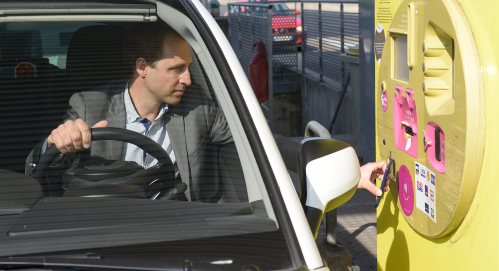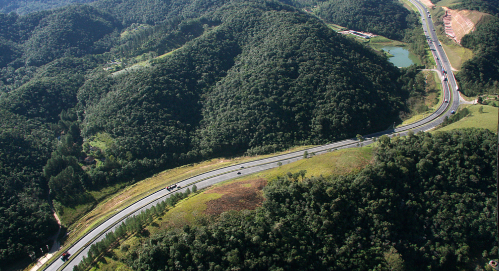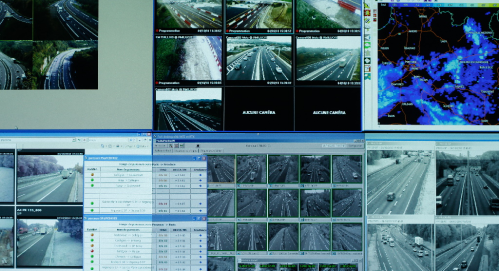Safe, sustainable, connected mobility
As vehicle connectivity grows, spurred by the fast take-up of electric vehicles and the 5G network rollout, is the mobility paradigm is changing and breaking down silos between transport networks and between urban and interurban areas, while facilitating multimodality and mobility as a service.
That having been said, vehicle-infrastructure connectivity is enabling proactive mobility management (shifting the paradigm from detect-intervene to predict-avoid) and will help cut down the number of accidents and levels of pollution and congestion.
This has significant benefits for people's health and for countries' economies, through reduced health spending and increased productivity.
In Abertis' opinion, therefore, achieving the goals of safer and more sustainable mobility involves facilitating the introduction of connected and increasingly autonomous vehicles, while facilitating our customers' transition to more sustainable mobility.
Making connected mobility a reality entails upgrading transport and communication infrastructures in a cross-sector effort.
In this context, fair payment for infrastructure use, proportional to how much each driver uses the infrastructure and how much pollution they generate, is a fundamental tool for achieving such goals. Abertis has examples of fairer dynamic payment for use, enabled by vehicle connectivity, such as the one presented below in the INNOVATION IN OPERATION section.
All in all, digitization is a factor that is changing the mobility paradigm with real-time information, connected and autonomous vehicles, an increase in electronic transactions, interoperability between services and devices, more comfortable and barrier-free travel, better maintenance of infrastructures and greater security.

How transport infrastructure and mobility are evolving
Making this scenario a reality involves digitising infrastructure: sensors (including vehicle sensors), communications, data, storage, edge and cloud processing capabilities. New mobility services, including advanced mobility management, entail creating appropriate digital infrastructure. Abertis' role is fundamental: today no one doubts that connected mobility, and especially autonomous mobility, can only be developed with the proper infrastructure.
That is why Abertis continues participating in projects to design the future's infrastructure and that contribute to forge the alliances and business models needed to carry out this effort, which involves sectors as different as road operators, energy operators and mobile network operators.
Projects like 5GMED are devising a 5G network infrastructure and services model that can be rolled out at sites where power and backhaul resources are scarce. Under 5GMED and similar projects, we have developed our advanced digital architecture, which supports artificial intelligence-enabled functions running at the edge, decentralising traffic monitoring and management.
Apart from bringing proactive mobility management, steadily introducing connected vehicles, coupled with digitising infrastructure, equates to big data access.
Big data availability is both a challenge and a great opportunity, which is why the Abertis Group's is focusing its attention on both.
Some of the aspects associated with the big data challenge that Abertis is working on include:
- Data transmission and management capacity.
- Development of algorithms and models to exploit the data.
- Understanding the opportunity and prioritising the services to be developed.
- Ensuring data protection and privacy.
We are also working to realise the associated benefits through initiatives and areas of work such as:
- Traffic status prediction.
- Risk prediction (and mitigation) (e.g. of accidents).
- Control Centre automation and thus advanced mobility management strategies.
- Individualised communication with drivers and vehicles.
- Real-time monitoring of the state of our infrastructures.
- Prediction of infrastructure evolution and their maintenance needs.
Artificial intelligence is the key to managing the challenge and making the opportunity real.

The road lab of the future: digitisation and active mobility management
In its Future Road LAB, the Abertis Group pilot tests connected mobility and infrastructure digitisation-related technologies and services, as well as developing the necessary alliances to make this new mobility a reality.
The FRL is a physical laboratory, backed by living labs in the Group's different concessions, and the main one is located in the Spanish business unit.
The LAB's ultimate goal is to improve mobility management by making it safer, cleaner and more efficient, together with our customers.
Some specific areas of the LAB's work, always from a practical point of view and in a real environment, are:
- Real-time traffic and pollution monitoring.
- Traffic and pollution trend prediction.
- Communication with users, via panels and directly via mobile applications or in-vehicle; before, during and after their journey.
- 5G communication technology and edge processing.
- C-V2X and C-ITS service.
- Electric and autonomous mobility support and management.
The LAB is open to other companies and startups, either through joint initiatives or as a test bed. If you need more information send us an email to: beyondroads @abertis.com
Main areas of work
Innovation projects at Abertis revolve around its core business and adjacent areas, the key objectives pursued being operational excellence and growth.
Core issues such as road safety and sustainability are sometimes the key objective of certain projects per se and are, in any case, transversally present in any initiative.
Digital Infrastructure

The goal of this Area of Interest is to understand future infrastructure requirements and to ensure its readiness for electrical and connected mobility.
The area includes connectivity; infrastructure digitalization; vehicle data; automated traffic management; and C-ITS services; among others.
Artificial Intelligence and Advanced Analytics

Artificial intelligence is used across the board in any of the Group's lines of business. Abertis prioritises those proofs of concept and initiatives that intersect with the rest of the Company's areas of interest. Some current areas of work include:
- Ascertaining our customers' behaviour and needs.
- Improving operations.
- Improving road safety.
- Automation and advanced mobility management.
- Infrastructure monitoring and inspection.
- Improving maintenance planning.
- Improving business planning.
Road Surface Management and Maintenance

Road surfaces are central to Abertis' activity, as the safety and comfort of our customers depend on them. In addition, their impact on the Group's carbon footprint is significant.
Abertis works mainly along two lines:
- Advanced materials: materials that are more durable, less polluting or with rolling characteristics that make them more suitable for specific contexts. Abertis is also working on developing processes associated with road surface recycling and maintenance.
- Intelligent road surface management: new monitoring methods, artificial intelligence and optimisation of maintenance planning, among others.
Advanced Infrastructure Monitoring

With a clear focus on reducing risks and maintenance costs, Abertis is researching and experimenting with monitoring technologies, such as satellite technology, which lets us both control the Group's structures in real time, and identify and even anticipate possible risk situations.
Concrete examples of projects either at the drawing board, pilot testing or operational stage include:
- Using drones for safer, more efficient inspections
- Sensorising bridges to monitor their condition in real time and collect data that will help us develop more accurate bridge-ageing models.
- Digital Twins, which give us a secure virtual environment for designing and testing systems and strategies before putting them into operation.
- Development of new inspection modes and more accurate evolution models, thanks to the application of Artificial Intelligence.
- Monitoring slopes and retaining walls for early identification of risks and maintenance needs.
Advanced Mobility Management

Infrastructure digitisation, coupled with increasing vehicle-infrastructure connectivity, paves the way to proactive mobility management, which can help to achieve goals such as:
- Reducing accidents.
- Reducing pollution levels.
- Reducing congestion.
Abertis gears its efforts towards the following areas of work, among others:
- Perception of traffic conditions, incidents and pollution.
- Prediction and simulation of management scenarios.
- Alerts and efficient incident management.
- Vehicle as data source.
- Mobility management automation.
- Dynamic charging by use and pollution, as a mobility management tool
Energy Transition

In addition to energy efficiency initiatives and rolling out electric car parks on its roads, Abertis' energy transition commitment means that we are investigating fields such as mobility with green fuels in goods transport, developing services that facilitate our clients’ energy transition and producing clean energy for self-consumption.
Road Safety

Abertis has been a global benchmark in road safety for years.
The goal of this Area is to use new technologies and methodologies that substantially improve safety of workers and users of the highways under Abertis' control. The final goal is to eventually eliminate accidents and other hazards.
